Jellyfish really are some of the most surprising creatures on the planet. Just look at it.
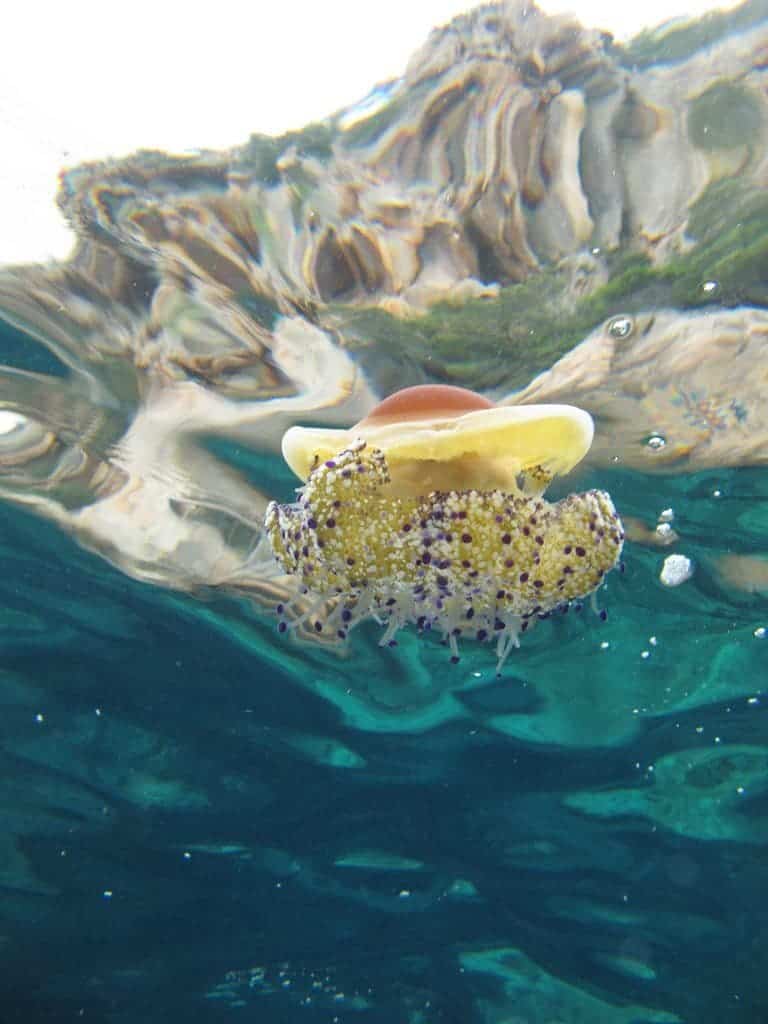
The so-called “Fried Egg Jellyfish” (it’s easy to see why) are actually two different species, that have very little in common except for their appearance. Phacellophora camtschatica and Cotylorhiza tuberculata live in different areas, have different features, and they like different things.
Phacellophora camtschatica is a very large jellyfish, with a bell up to 60 cm (2 ft) in diameter and sixteen clusters of up to a few dozen tentacles, each up to 6 meters (20 ft) long! It can be found in most of the world’s oceans, feeding on other jellyfish and zooplankton. Its sting is very weak – so weak that some crustaceans ride on its bell and steal food from its oral arms and tentacles. Young jackfish often can be found swimming among their tentacles.
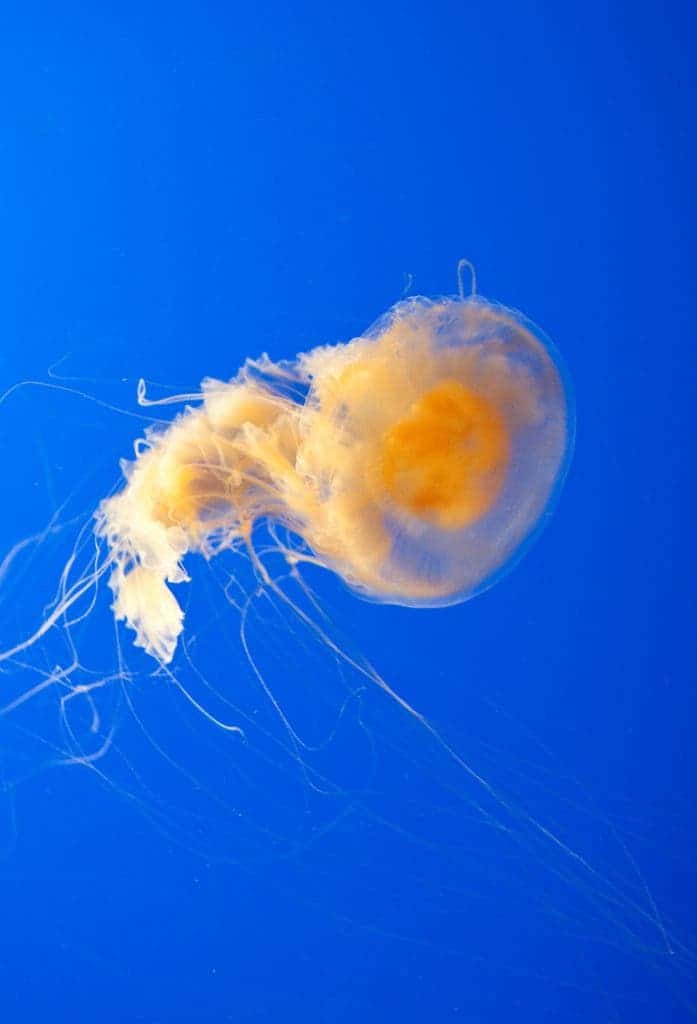
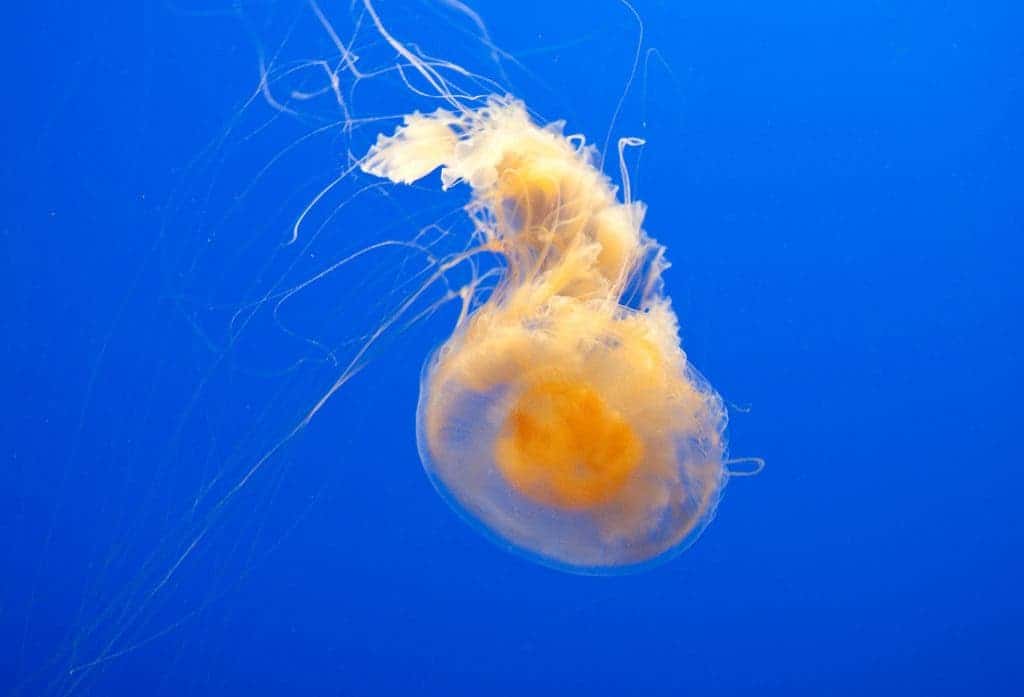
However, because it specializes in capturing and eating jellyfish that can’t move on their own, its tentacles are more sticky. Some plants and turtles eat this fried egg jellyfish, and they often mistake plastic bags for it, eating the plastic, with damaging effects on their health. Think about that when you use plastic bags.

Cotylorhiza tuberculata on the other hand is much smaller, only rarely reaching over 30 cm, usually remaining under 17 cm. It prefers the warm waters of the Mediterranean sea, and unlike most jellyfish it can swim on its own, without relying on currents.
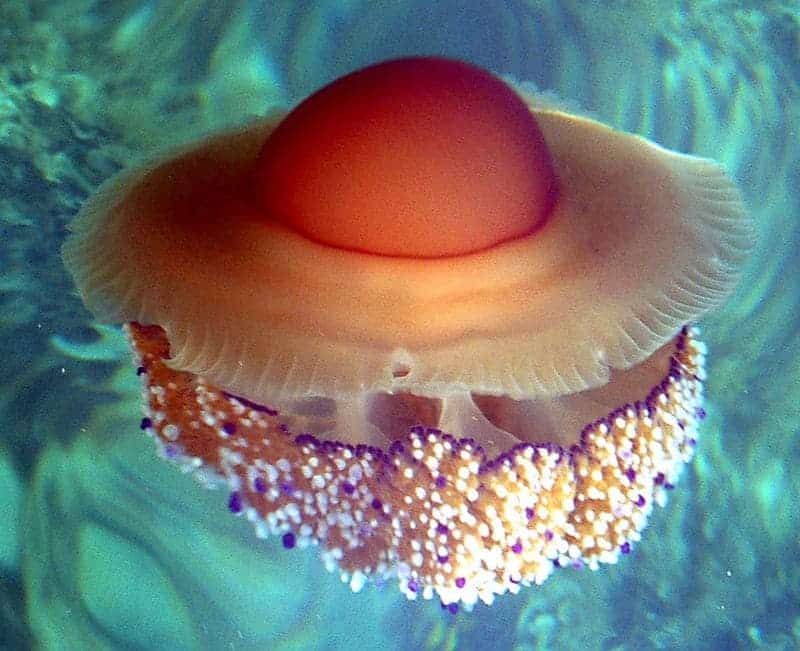
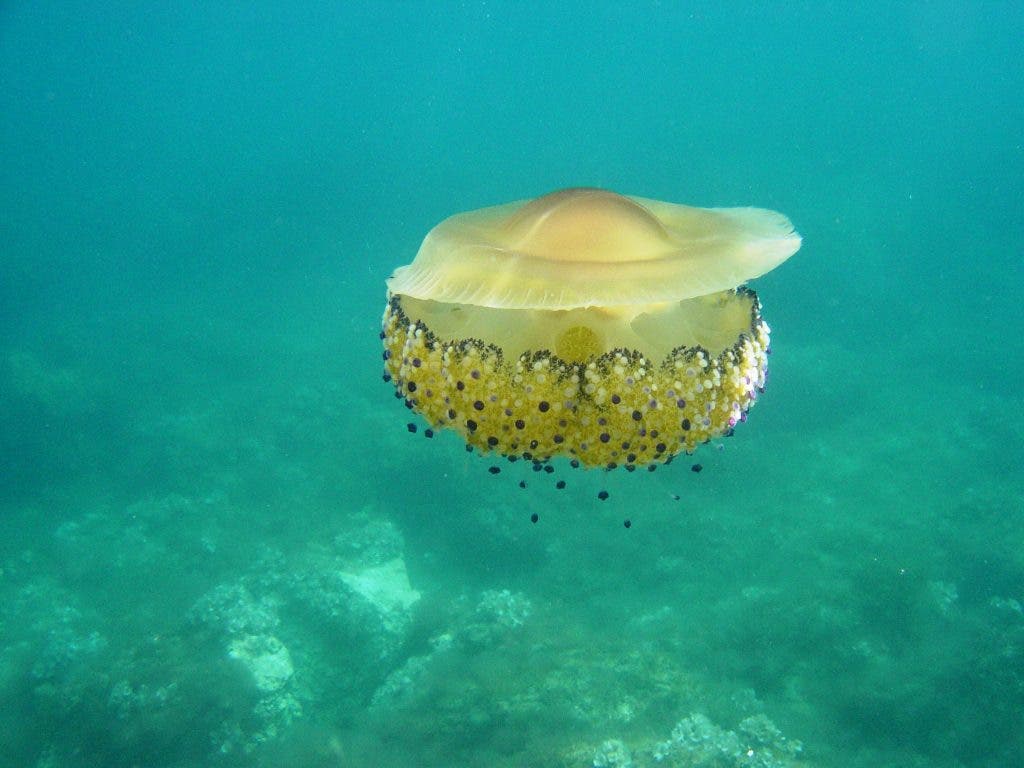
This species feeds on microplankton and has eight oral arms which are brittle, short and fused proximally. Numerous blue or purple-tipped appendages are located between each of the oral arms. These colors are due to the presence of unicellular symbiotic algae (zooxanthelle). Its sting is not harmful to humans.






